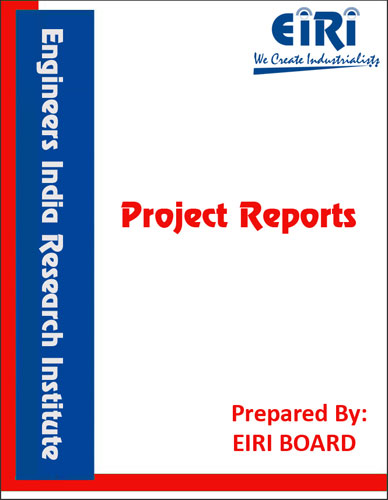Under Garments
The project report includes Present Market Position and Expected Future Demand, Market Size, Statistics, Trends, SWOT Analysis and Forecasts. Report provides a comprehensive analysis from industry covering detailed reporting and evaluates the position of the industry by providing insights to the SWOT analysis of the industry.
We can prepare PROJECT REPORT as per your INVESTMENT PLAN for BANK LOAN REQUIREMENT and INDUSTRY ANALYSIS. All reports are prepared by highly qualified consultants and verified by a panel of experts.
Have Query? Click Here to Chat
Industry Expert is Online, Chat with him for more detail.

The Indian Garments market may be classified into three categories; men’s wear, women’s wear and kid’s wear. Women’s wear segment of the market is mostly dominated by unorganized players. Globalization coupled with fast fashion has resulted in awareness on fashion trends and styling. It has been estimated that the Rs 1,02,358 crore women’s wear market will grow at a CAGR of 11 per cent to reach Rs 2,89,518 crore in 2025. This is predicted that women’s wear may have a greater market than men’s wear in India between 2025-30. Men’s wear segment contributes the most in Garments market; i.e 42 per cent followed by women’s wear at 38 per cent and kids at 20 per cent, the women’s wear segment is expected to grow at higher rate than men’s wear. This growth will not only be limited to market size, but will also see a paradigm shift from non-branded to branded and ethnic wear to western wear as well. Underwears are favorite and in demand throughout the year. There is a huge profit of margin in this unit as this industry is having less competition and usages are high.
Each ‘EIRI’ MARKET OVERVIEW CUM DETAILED TECHNO ECONOMIC FEASIBILITY REPORT (Complete Report) tentatively covers
• Introduction
• Properties
• BIS (Bureau of Indian Standard) Specifications & Requirements
• Uses & Applications
• Present Indian Market Position (Not Survey)
• Export & Import Statistics Data
• Names and Addresses of Existing Units (Present Manufactures)
• List of Plant & Machineries
• Miscellaneous Items and Accessories
• Instruments, Laboratory Equipments and Accessories
• Electrification, Electric Load and Water
• Maintenance, Suppliers/Manufacturers of Plant and Machineries
• Flow Sheet Diagram
• List of Raw Materials
• Availability of Raw Materials
• Requirement of Staff & Labour
• Personnel Management
• Skilled & Unskilled Labour
• Requirement of Land Area
• Built up Area
• Plant Layout
Along with financial details as under:
• Capacity of the Project
• Land & Side Development Exp.
• Buildings Cost
• Plant & Machineries
• Misc. Fixed Assets
• Technical Know how Fees & Exp.
• Preliminary Expenses
• Pre-operative Expenses
• Provision for Contingencies
Below mentioned financial statements (Annexure) will be for 5 to 10 Years
• Annexure:: Cost of Project and Means of Finance
• Annexure:: Output, Profitability and Cash Flow Chart
• Annexure:: Assessment of Working Capital requirements
• Annexure:: Sources of Finance
• Annexure:: Balance Sheets
• Annexure:: Break-Even Analysis and profitability analysis.
• Annexure:: Quantitative Details-Output/Sales/Stocks
• Annexure:: Sales Realisation
• Annexure:: Raw Material Cost
• Annexure:: Other Raw Material Cost
• Annexure:: Packing Material Cost
• Annexure:: Consumables, Store etc.,
• Annexure:: Employees Expenses
• Annexure:: Fuel Expenses
• Annexure:: Power/Electricity Expenses
• Annexure:: Repairs & Maintenance Exp.
• Annexure:: Other Mfg. Expenses
• Annexure:: Administration Expenses
• Annexure:: Selling Expenses
• Annexure:: Depreciation Charges – Profitability
• Annexure:: Depreciation Charges
• Annexure:: Interest and Repayment – Term Loans
• Annexure:: Tax on Profit
• Annexure:: Assumptions for Profitability workings
• Annexure:: Assessment of Working Capital



